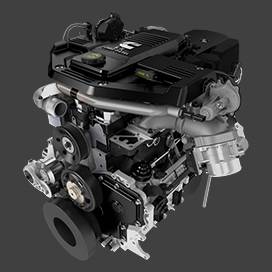Ene . 01, 2025 01:01 Back to list
Composition of Materials Used in Brake Drum Manufacturing and Their Properties
Understanding Brake Drum Material Composition A Key to Performance and Safety
Brake drums are a critical component in the braking systems of many vehicles, particularly in heavy-duty applications such as trucks and buses. To ensure optimal performance and safety, the composition of brake drum materials plays a pivotal role. This article delves into the various materials used in brake drum construction, their properties, and the implications on performance and safety.
Materials Used in Brake Drums
1. Cast Iron Historically, cast iron has been the most common material for brake drums. This material offers excellent durability, high wear resistance, and good thermal conductivity. The ability of cast iron to dissipate heat effectively helps prevent brake fade, a condition that can compromise braking performance. Additionally, cast iron is relatively cost-effective, making it a popular choice among manufacturers.
2. Aluminum Alloys As the automotive industry seeks to reduce vehicle weight for better fuel efficiency, aluminum alloys have gained traction in brake drum manufacturing. Aluminum is significantly lighter than cast iron, which can enhance the overall performance of the vehicle. Although aluminum may not dissipate heat as effectively as cast iron, advancements in alloy compositions have led to improved thermal properties. Moreover, aluminum’s resistance to corrosion is an added benefit, especially in environments prone to moisture.
3. Composite Materials The introduction of composite materials in brake drum manufacture represents a significant innovation. These materials often combine the best attributes of metals with polymers or ceramics. Composites can offer lightweight solutions while maintaining high strength and durability. They also exhibit excellent thermal stability and resistance to wear and corrosion. Although composites can be more expensive to manufacture, their longevity and performance characteristics can make them a cost-effective option in the long run.
4. High-Performance Alloys In racing and high-performance applications, specialized alloys are often used to construct brake drums. These materials can withstand extreme temperatures and stresses, thereby ensuring reliable performance under demanding conditions. High-performance alloys are typically designed to provide enhanced thermal conductivity and lower weight, optimizing the braking system's efficiency.
brake drum material composition

Impacts of Material Composition on Performance
The composition of brake drums directly affects their performance, efficiency, and longevity. For instance, the thermal properties of the material play a crucial role in the management of heat generated during braking. Excessive heat can lead to brake fade, where the braking power diminishes, potentially leading to hazardous situations. Materials that effectively absorb and dissipate heat, such as cast iron and certain composites, are ideal for maintaining consistent braking performance.
Moreover, the strength and rigidity of the material influence how well the brake drum can handle the forces exerted during braking. A rigid material minimizes distortion, ensuring that the brake pads maintain consistent contact with the drum surface. This contact is vital for effective braking, as any misalignment can reduce braking performance and lead to uneven wear.
Conclusion
The choice of material composition for brake drums is a critical aspect that influences vehicle safety and performance. While traditional cast iron continues to be a reliable option, advancements in materials such as aluminum alloys and composites pave the way for innovation in braking technology. As the industry moves towards lighter and more efficient materials, understanding the implications of each material type becomes essential for manufacturers, mechanics, and vehicle owners alike.
In summary, the ongoing evolution of brake drum materials reflects the automotive industry's commitment to improved safety and efficiency. Whether it’s the reliable strength of cast iron, the lightweight advantages of aluminum, or the cutting-edge performance of composite materials, each choice plays a vital role in ensuring that vehicles can stop safely and effectively in all driving conditions. As technology progresses, future developments in brake drum materials will undeniably continue to enhance vehicle safety, performance, and driver confidence on the road.
-
BPW Axles & Suspensions | Quality Running Gear for Trailers
NewsAug.06,2025
-
Premium Iveco Brake Drum - Durable & Reliable Performance
NewsAug.05,2025
-
High-Performance Nissan Brake Drum | Durable Braking
NewsAug.03,2025
-
2014 Mitsubishi Mirage Rear Brake Drums | Durable & Precise
NewsJul.31,2025
-
High-Quality Trailers for Towing Needs | Shop Now
NewsJul.25,2025
-
Premium MAN Shaving Kit for Effortless Comfort
NewsJul.25,2025
